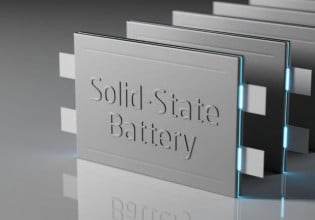Texas Instruments’ 70W Motor Drivers Enable Rapid BLDC Motor Designs
The two new units provide code-free, sensorless trapezoidal control or field-oriented control (FOC), saving months of design time.
Texas Instruments’ (TI) MCF8316A and MCT8316A brushless DC (BLDC) motor drivers provide a battery of control algorithms making it unnecessary for engineers to independently develop the necessary motor-control software, saving months of design time. TI asserts that the devices will enable designers to “spin” a BLDC motor in 10 minutes.

Image courtesy of TI
Both the MCF8316A and the MCT8316A provide single-chip code-free sensorless solutions for 12V to 24V BLDC motors with 8A peak current capability. Both devices incorporate three internal 1/2-H bridges featuring a maximum 40V capability with high side plus low side RDS(ON)s of 95mΩ.
Through the internal integration of many of the discrete components necessary to effect control, including the power MOSFETs, use of the MCF8316A or the MCT8316A can save designers up to 70% of the board space that conventional solutions would require.
The algorithm configurations and register settings can be stored in non-volatile EEPROM, allowing the motor drivers to operate independently after they have been configured. Once up and running, both motor drivers can receive their speed commands through analog voltage, a PWM input, or via I2C command.
The Need
As per Noman Akhtar, senior research analyst, Omdia, “The need for real-time motor control is more critical than ever, thanks to broad-reaching trends like power efficiency and automation, as well as increasing demand for quieter motors." He goes on to state that "A growing number of industrial systems are transitioning from AC induction to BLDC motors, which are more power-efficient but require complex hardware and optimized software designs to deliver high performance. Meeting designers’ needs for faster motor response while shortening the overall design cycle will be an important step forward for next-generation industrial systems."
Sensorless Control Eliminates the Need for Hall Sensors
TI’s new BLDC motor drivers’ control algorithms, combined with their high level of integration, enable the devices to manage functions including motor fault detection and also to implement protection mechanisms necessary to ensure system reliability. Because the units integrate sensorless technology for determining the rotor’s position, there is no need for external Hall sensors, which leads to greater reliability and lowers costs.
The MCF8316A
The MCF8316A implements code-free sensorless FOC, obviating the need for an external microcontroller to spin either a BLDC or a permanent magnet synchronous motor (PMSM). The device features integrated current sensing, eliminating the need for external current sense resistors. The motor driver features an automatic dead-time compensation technique that enables optimization of motor acoustics.
The MCT8316A
The MCT8316A provides a single-chip code-free sensorless trapezoidal solution, providing very fast startup time (<50ms) or high speed operation (up to 3kHz electrical) as needed. Control of motor start-up behavior or closed loop operation is highly configurable through register settings or hardware pins, depending on the model version chosen. Motor noise can be controlled using the unit’s variable trapezoidal control techniques.
Physical Considerations
- Both devices are available in 5 x 7mm quad flat no-lead packages.
- They operate over a -40 to +125°C temperature range.
Getting to Market faster
TI has made evaluation boards available for both of the new motor drivers:
- The MCF8316AEVM is targeted at the MCF8316A FOC BLDC motor driver.
- The MCT8316AEVM serves with the MCT8316A trapezoidal BLDC motor driver.
Featured image used courtesy of Texas Instruments






